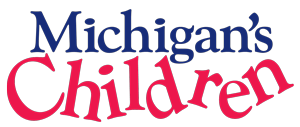Shining a Spotlight on Third Grade Reading
Last month, House Bill (HB) 5111 was introduced to address the significant challenges Michigan students face regarding third grade reading proficiency. The 2012 Michigan Kids Count Data Book reported that 69 percent of Michigan fourth-graders had reading skills below the proficiency level according to national standardized tests, and significant disparities were prevalent by race and income. Specifically, nine out of ten African American students, eight of every ten Hispanic/Latino, and eight of every ten low-income students could not demonstrate reading proficiency, rates that are significantly worse than for white and higher-income students. Clearly, the Legislature must shine a spotlight on this critical benchmark, which can negatively impact students’ future educational careers beyond fourth grade if students fail to master needed literacy skills.
HB 5111 would ensure that students could not enroll in the fourth grade until they demonstrate third grade literacy standards. However, merely retaining students to repeat the third grade will prove to be insufficient if the goal is to increase third grade reading proficiency. Other evidenced measures to support children’s literacy development must be in place to ensure more students can reach this critical benchmark. In response, HB 5144 was introduced this week and would require the Michigan Department of Education (MDE) to adopt policies and programs that would enable more Michigan children to attain reading proficiency by the end of third grade. This bill is tie-barred to HB 5111, meaning that neither bill would be implemented unless both bills are passed into law.
HB 5114 makes the critical first step of working to identify some strategies, led by MDE, to move more children towards reading proficiency. However, we already know what it takes to ensure that children are meeting this critical benchmark. Michigan took the first step by significantly expanding the Great Start Readiness Program (GSRP) – the state’s preschool program for four-year-olds at-risk of being underprepared for kindergarten – to ensure that thousands of additional children could access this program. GSRP has proven to not only better prepare youngsters for kindergarten but also increase third grade reading levels.
But access to high quality preschool is only one piece of the puzzle. Last week, the Annie E. Casey Foundation released a Kids Count policy report on the first eight years of life, which I blogged about, that also addresses third grade reading. As laid out in that report and as we know to be true from research, creating a high quality birth through third grade (B-3rd) system would support seamless transitions between early childhood and the early elementary years by merging the best and most critical components of early childhood and K-3/K-12 that result in better outcomes for kids, and ultimately eliminate achievement gaps. A B-3rd system will ensure that children develop strong foundational skills in literacy/communication and math well before kindergarten and develop social and emotional competence that begins early – all of which will be sustained once children are in school. Children and their families will establish patterns of engagement in school and learning while having the supports they need at home and in their communities – supports that can mitigate the challenges that are often associated with racial and economic disparities. Brain development is at its peak in the first three years and cognitive gaps can be seen in infants as young as 9 months of age. Thus, early, continued and coordinated supports are essential.
Beginning with early supports and creating a seamless transition between early childhood and elementary school is essential to making substantial strides in third grade reading proficiency. As the Michigan Legislature continues the dialogue on what it takes to ensure more students are successfully reaching this critical benchmark, policymakers must look holistically at what challenges young children face to read proficiently and knock-down the systemic barriers that stand in their way.
Learn more about the birth to third grade system in Michigan’s Children’s Issues report.
-Mina Hong
